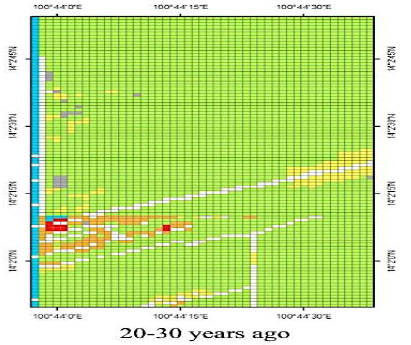Modeling of Urban Land Use Changes: A Case Study of Communities Near Rajamangala University of Technology Thanyaburi
Main Article Content
Abstract
This research has investigated the changes in land use of an area adjacent to a university over the past 30 years to predict the future use of land in the next 5 years (through to the year 2019). The study area is 2,000,000 m2 (1000 × 2000 m) in size and is located on the east side of Rajamangala University of Technology Thanyaburi (RMUTT) in Thailand’s Prathum Thani province. In this research, geographical data were collected and categorized into nine groups by land use types for four different time periods: 20-30 years ago, 10-20 years ago, 5-10 years and the present. This research has ceased at the 30-year mark because the university was first established in the area merely some 30 years ago. The nine land use types are: 1) agricultural area; 2) irrigation canal; 3) roads; 4) wasteland; 5) dormitory/apartment complex; 6) residential housing estate; 7) commercial area; 8) convenience store; and 9) other. The ArcGIS program was deployed to predict the future land use based on the 30-year geographical data. The findings indicate that the existence of the university has contributed to a constant influx of non-resident students and workers to the area and the subsequent sprawling residential housing projects and basic services. This necessitates the conversion of agricultural farmlands into other developments and thereby a steady decline of agricultural areas. The area also suffers from traffic jams, environmental degradation, and higher cost of living. Thus, the future planning and management of land use near or around a large educational institution must take into an account the subsequent rapid growth of the community in close proximity to the institution and its ramifications.
Article Details
Published articles are under the copyright of the Environment and Natural Resources Journal effective when the article is accepted for publication thus granting Environment and Natural Resources Journal all rights for the work so that both parties may be protected from the consequences of unauthorized use. Partially or totally publication of an article elsewhere is possible only after the consent from the editors.

